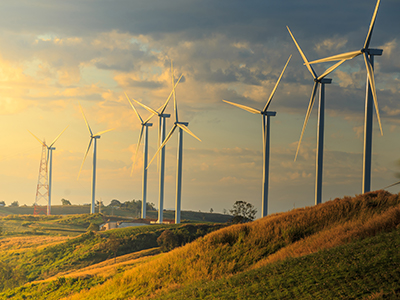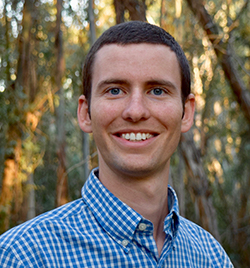
Dec. 13, 2021 – Environmental, economic and energy security concerns are causing an urgent need for sustainable electricity generation. To meet those needs, David Copp, UCI assistant professor of teaching in mechanical and aerospace engineering, and colleagues at Sandia National Labs in New Mexico analyze paths to 100% renewable energy. Their research was recently published in the journal Energy.
Copp and colleagues have developed an analytical framework for determining the resources needed to transition to a 100% renewable electric power system. Their framework enables analysis of important factors, such as cost, reliability and geographic location, when planning and operating electric power systems with large amounts of renewable generation like wind and solar.
“This work enables exploration of the economic and operational feasibility of plans to transition to more renewable generation,” said Copp. “This type of analytical framework is especially important right now since many utilities, energy providers and governments are transitioning to 100% renewable or carbon-free generation.”

The researchers specifically applied their framework to investigate case studies in New Mexico. They selected the state because of its significant potential for solar and wind generation. New Mexico also passed legislation called the Energy Transition Act, which mandates that 100% of the state's electricity is supplied with carbon-free resources by the year 2045 and that at least 80% of the state's electricity is supplied by renewable energy resources by the year 2040. Many other states have similar plans, and Copp’s framework can be applied to help them transition to more sustainable electric power systems.
One unique aspect of their research approach is that it is open to all. They have formulated an optimization problem to find the best solution given available data and constraints. “With publicly available weather and electricity consumption data, anyone can apply our framework to analyze scenarios and locations they are interested in,” Copp explained. “Moreover, multiple timescales can be investigated for planning, from days and months to seasons and years. Our formulation also accommodates the analysis of regional energy trading (exchange of excess energy generated among areas with greater need), which should play a large role in future power systems to reduce costs and improve reliability.”
Copp was enthusiastic about the interdisciplinary work with power and energy stakeholders and collaboration with Sandia National Laboratories. “This type of collaboration is exciting because it leverages the expertise of people from diverse technical backgrounds and perspectives, which is crucial for solving society’s biggest challenges,” he said. “We hope this framework can be used by a broad set of stakeholders who are helping plan transitions to more sustainable, reliable and equitable electric power systems.”
Collaborators from the Sandia National Laboratories included Tu A. Nguyen, Raymond H. Byrne and Babu R. Chalamala.
The research was funded by the U.S. Department of Energy Office of Electricity, Energy Storage Research program.
– Tonya Becerra
